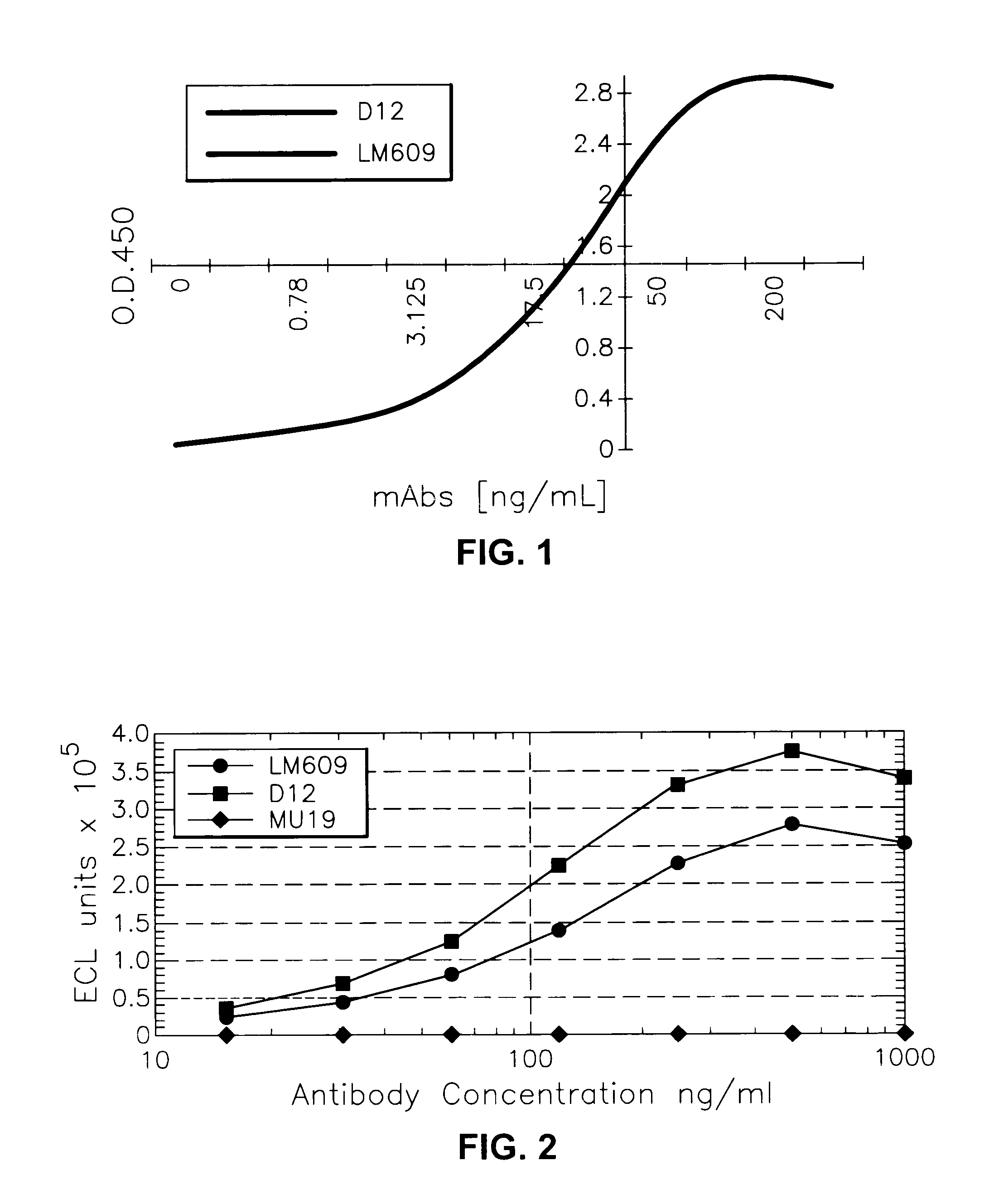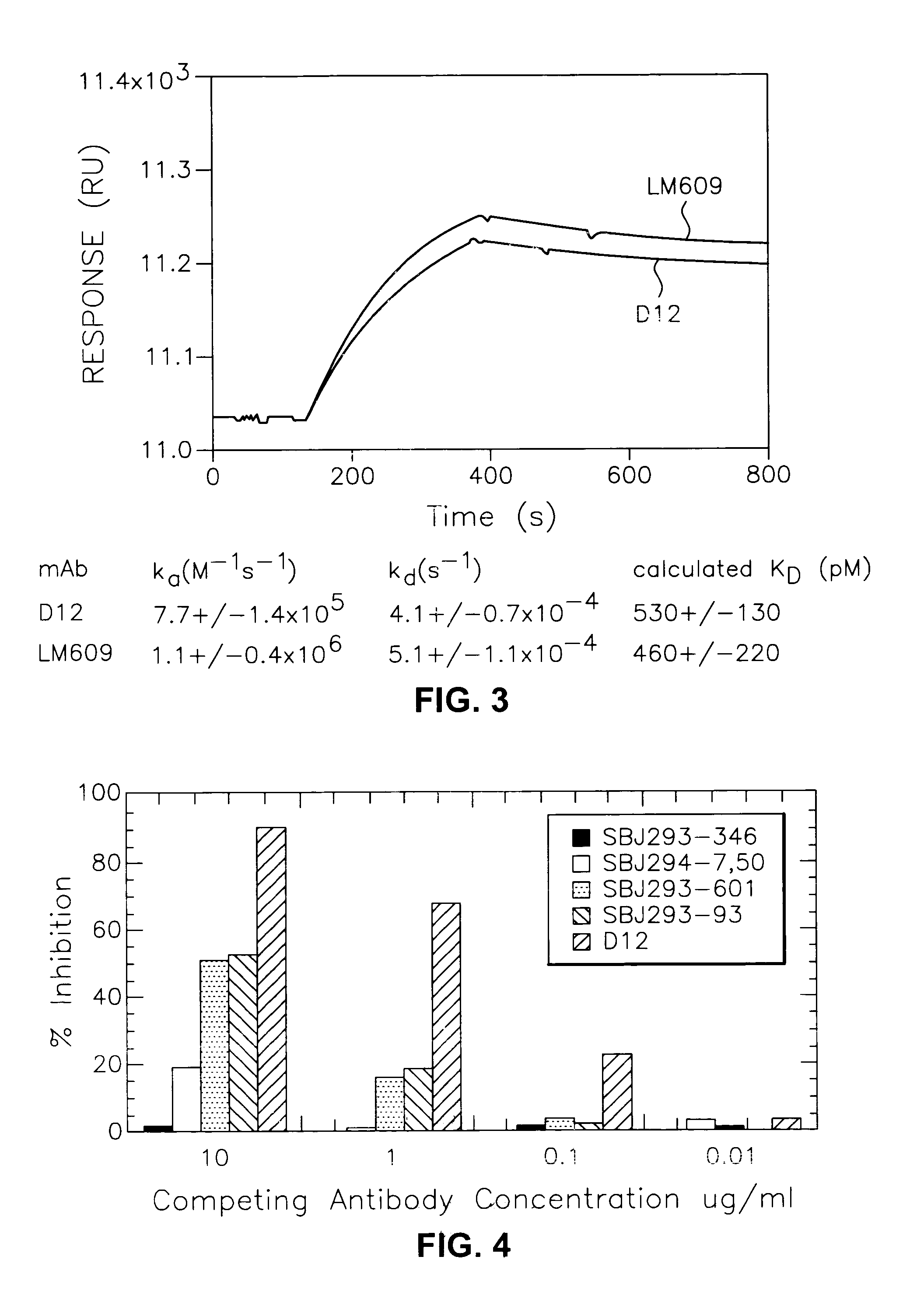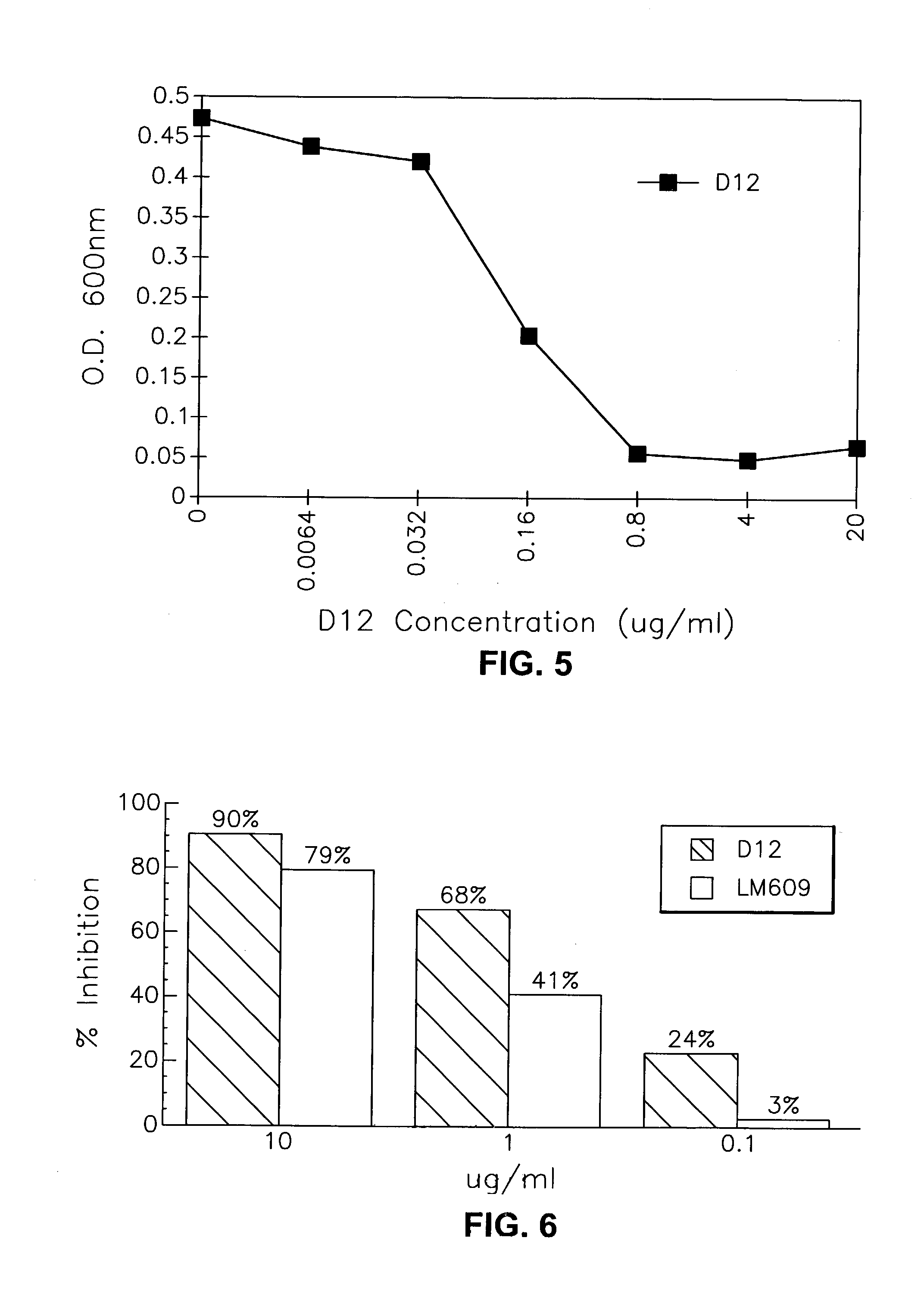Anti-alphabeta3 humanized monoclonal antibodies
a humanized monoclonal antibody and antibody technology, applied in the direction of peptides, drug compositions, injected cells, etc., can solve the problems of unstable and low-producing hybridoma lines, few successes in producing human monoclonal antibodies through classic hybridoma technology
- Summary
- Abstract
- Description
- Claims
- Application Information
AI Technical Summary
Benefits of technology
Problems solved by technology
Method used
Image
Examples
example 1
Purification of αvβ3, αvβ5, and αvβ1 Receptors
[0135]The human αvβ3 protein receptor and other protein receptors were purified from human placenta as follows. Placentas were frozen immediately after birth, then partially thawed and cut into small chunks which were ground to fine pieces using a commercial meat grinder. Usually five to ten placentas were ground at one time; the pieces were placed into 50 ml centrifuge tubes (6 tubes per placenta) and stored frozen at −20° C. until use.
[0136]An immunoaffinity column for each integrin was prepared using individual monoclonal antibodies. Anti-αvβ3 mAb (LM609) was purified from mouse ascites purchased from Chemicon International, Inc. (Temecula, Calif.). Monoclonal antibodies 23C6 or D12 were purified from hybridoma media. Anti-αvβ5 mAb (P1F6) and anti-αvβ1 mAb (mAb16) were purchased from Becton Dickinson. LM609 or 23C6 or D12 (50 mg), P1F6 (25 mg), and mAb16 (25 mg) were immobilized on AffiGel 10 (BioRad) at 5 mg of mAb / ml of resin follow...
example 2
Generation of Murine Monoclonal Antibodies
[0139]Murine mAbs with anti-αvβ3 activity were generated by classical hybridoma technology according to Lane el al, 1986, Methods in Enzymol., 121:183. Generally, 20–50 μg of αvβ3 receptor was administered ip, sc, and iv to two Balb / c mice. Sera from the immunized animals were tested for their anti-αvβ3 binding and neutralizing activity in assays of Examples 3, 4 and 5 below. Mouse spleen from mice showing positive sera was fused with a mouse myeloma cell SP2 according to the procedures of Lane et al, cited above. Seventeen resulting hybridoma cell lines, secreting potential anti-human αvβ3 protein antibodies were obtained. These anti-αvβ3 mAbs were generated and isolated from culture by conventional methods and tested in assays of the following examples.
[0140]Table I is a summary of much of the early data collected from Examples 3–12 below on the murine mAb LM609 of the prior art and murine mAbs of this invention. The data showed that mAb D...
example 3
ELISA Binding Assay with αvβ3
[0142]Binding of the various antibody constructs to purified human placenta αvβ3 receptor protein as antigen (receptor either bound to the plate or to the beads via biotin-avidin) was measured in a standard solid phase ELISA.
[0143]Antigen diluted in 0.1 M CO3 pH 9.2 was adsorbed onto polystyrene round-bottom microplates (Dynatech, Immunolon II) for 18 hours. Wells were then washed one time with phosphate buffered saline (PBS) containing 0.05% Tween 20. Antibodies (50 μ / well) were diluted to varying concentrations in PBS / 0.05% Tween 20 and added to the antigen coated wells for two hours at room temperature. Plates were washed four times with PBS containing 0.05% Tween 20, using a Titertek 320 microplate washer, followed by addition of HRP-anti-mouse IgG (100 μl / well) diluted 1:10,000.
[0144]After washing five times, o-phenylenediamine dihydrochloride (OPD) (1 mg / ml) was added and plates were incubated an additional 10 minutes. The reaction was stopped by ...
PUM
| Property | Measurement | Unit |
|---|---|---|
| body weight | aaaaa | aaaaa |
| time | aaaaa | aaaaa |
| pH | aaaaa | aaaaa |
Abstract
Description
Claims
Application Information
 Login to View More
Login to View More - R&D
- Intellectual Property
- Life Sciences
- Materials
- Tech Scout
- Unparalleled Data Quality
- Higher Quality Content
- 60% Fewer Hallucinations
Browse by: Latest US Patents, China's latest patents, Technical Efficacy Thesaurus, Application Domain, Technology Topic, Popular Technical Reports.
© 2025 PatSnap. All rights reserved.Legal|Privacy policy|Modern Slavery Act Transparency Statement|Sitemap|About US| Contact US: help@patsnap.com



